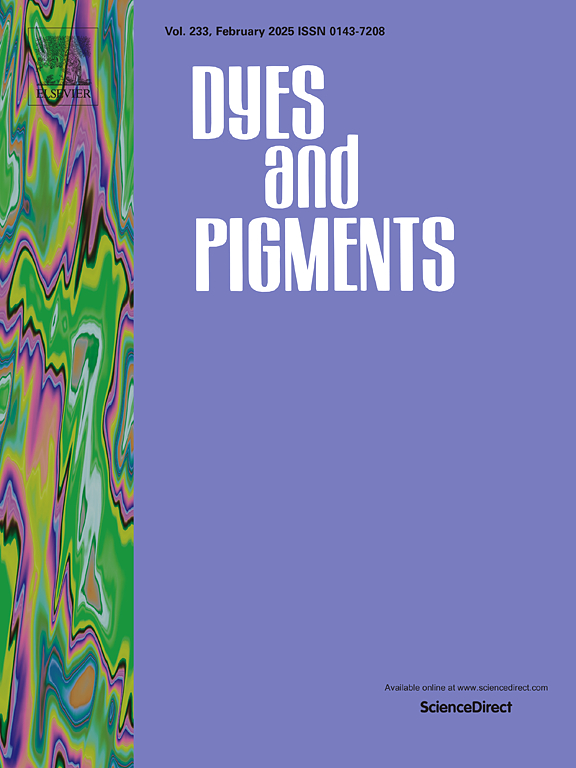Donor-imine-acceptor-based small organic molecule for efficient photothermal therapy
IF 4.1
3区 工程技术
Q2 CHEMISTRY, APPLIED
引用次数: 0
Abstract
The development of small molecules with high photothermal conversion efficiency (PCE) poses a significant challenge in the context of photothermal therapy, a promising modality for cancer treatment. While certain efficient small molecules have been documented in the literature, they often incorporate bulky alkyl chains and/or aromatic rings to enhance the photothermal effect. Hence, this study presents a novel and straightforward method for synthesizing a photothermal small molecule, designated as PA2, utilizing a donor-acceptor framework. In this framework, diphenylamine is employed as the donor moiety, while 1,3-Bis(dicyanomethylidene)indan is utilized as the acceptor moiety. PA2 demonstrated high PCE in both monomer and but also in aggregate state. In which, the excitation energy is efficiently released as heat via non-radiative decay through the conical intersection (CI) as confirmed by a computationally optimized minimum energy crossing point (MECP) and a combination of further theoretical studies and experimental control groups (PA3 and PA4). Notably, the resulting molecular architecture exhibits remarkable efficacy in inhibiting tumor growth after a 10-day photothermal therapy period. Furthermore, in vivo experiments in a mouse tumor model demonstrate the favorable biocompatibility of these photothermal small molecules, signifying their suitability for safe application in biomedical contexts. This study makes a substantial contribution to the field of photothermal therapy by introducing a novel molecular design paradigm based on small molecules.

求助全文
约1分钟内获得全文
求助全文
来源期刊

Dyes and Pigments
工程技术-材料科学:纺织
CiteScore
8.20
自引率
13.30%
发文量
933
审稿时长
33 days
期刊介绍:
Dyes and Pigments covers the scientific and technical aspects of the chemistry and physics of dyes, pigments and their intermediates. Emphasis is placed on the properties of the colouring matters themselves rather than on their applications or the system in which they may be applied.
Thus the journal accepts research and review papers on the synthesis of dyes, pigments and intermediates, their physical or chemical properties, e.g. spectroscopic, surface, solution or solid state characteristics, the physical aspects of their preparation, e.g. precipitation, nucleation and growth, crystal formation, liquid crystalline characteristics, their photochemical, ecological or biological properties and the relationship between colour and chemical constitution. However, papers are considered which deal with the more fundamental aspects of colourant application and of the interactions of colourants with substrates or media.
The journal will interest a wide variety of workers in a range of disciplines whose work involves dyes, pigments and their intermediates, and provides a platform for investigators with common interests but diverse fields of activity such as cosmetics, reprographics, dye and pigment synthesis, medical research, polymers, etc.
 求助内容:
求助内容: 应助结果提醒方式:
应助结果提醒方式:


